We try Ajinomoto’s European Chicken Katsu Curry Style frozen gyoza that has no katsu in it

The popularity of katsu-less, “katsu curry” flavored food continues to rampage throughout Europe.
Katsu is short for katsuretsu—cutlets. Therefore, the “katsu” part of “katsu curry” is actually referring to the breaded cutlet sat atop the rice and doused in delicious curry. This is why plenty of Japanese meals starring katsu don’t contain any curry at all. Unfortunately, however, while Europe is undergoing something of a katsu curry craze, marketers and customers alike can’t seem to wrap their heads around the concept of katsu curry being anything other than the mildly spicy Japanese-style curry served in the dish.
So while we might expect home-grown European companies to make this common slip-up, it’s another story entirely when it comes to Japanese food company Ajinomoto. After coming across this package of Chicken Katsu Curry Style Gyoza in an Asian supermarket in Ireland, our Japanese-language reporter Miho Kouzuki was spellbound. Ajinomoto themselves had branded the packet with their seal of approval… so how would it taste?
▼ Surely the No. 1 gyoza brand in Japan wouldn’t let her down.
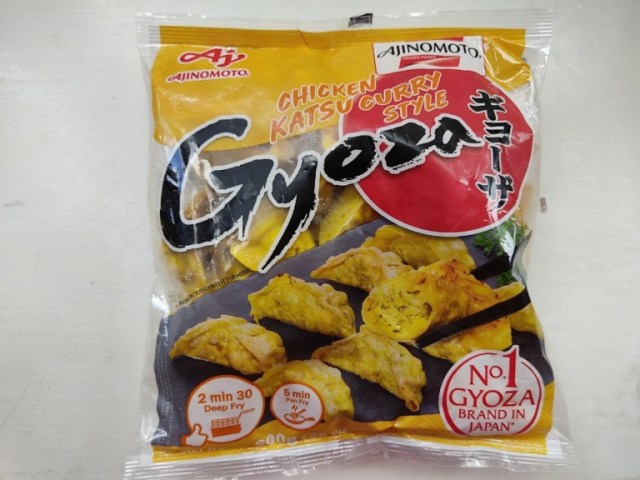
Miho paid 5.95 euros (US$6.90) for the chicken katsu curry style experience, netting herself 30 gyoza. She immediately flipped the package over to see further explanations for what lay in wait and made a dramatic discovery…
▼ No “katsu”!
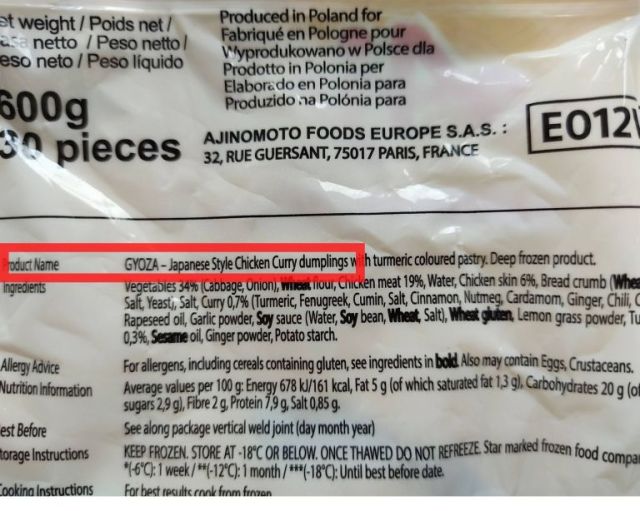
Yes, the ingredients told the whole truth—Japanese-style chicken curry dumplings! No sign of cutlet whatsoever!
Once home, Miho emptied out the contents of the bag. Japanese gyoza typically come lined up in neat little rows inside a plastic tray, so the free-falling gyoza tumbling out of the bag were a bit of a surprise. They were also much larger than typical frozen gyoza.
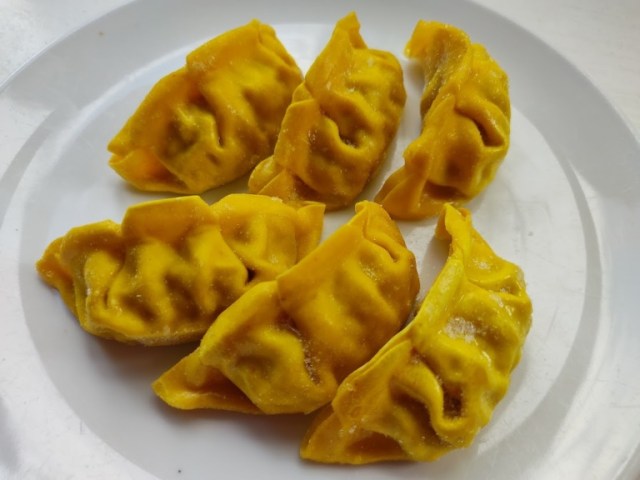
The packaging offers two ways to cook your frozen gyoza. Fry them on a stovetop for five minutes, or deep fry them for two and a half minutes. The thumbs-up icon next to the latter clearly indicated Ajinomoto’s personal recommendation.
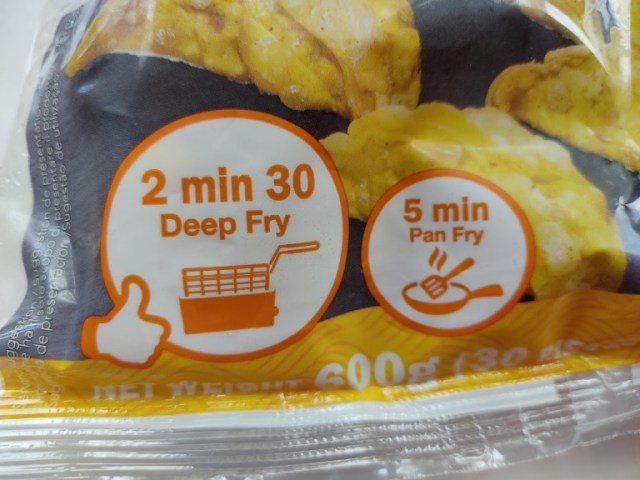
Feeling wilful, Miho refused and pan-fried her first set of gyoza. They filled the room with the aromatic smell of curry as they sizzled, and Miho couldn’t help but get a little excited over how this strange hybrid gyoza might actually taste.
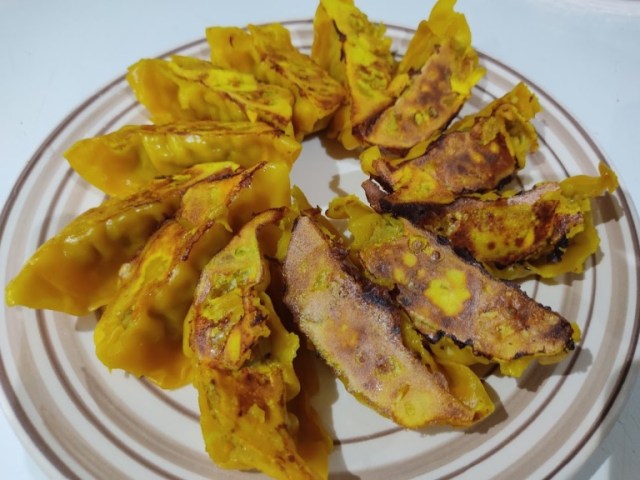
She hesitantly raised one to her lips…
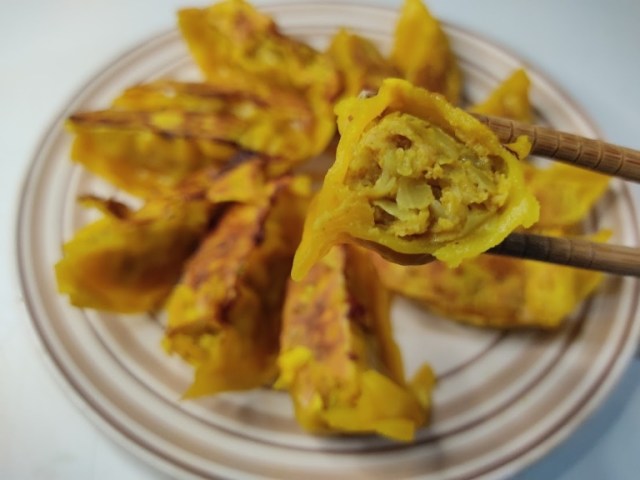
And was baffled to find its flavor was completely underwhelming.
Though she could taste plenty of cumin, there was no punchy burst of flavor—no “wow” factor. It was surprisingly mild considering the bombastically billed combination of curry and gyoza. And of course, it tasted absolutely nothing like katsu curry. There was no cutlet in it, after all.
Miho decided to give the deep-fried version a shot. What else did she have to lose?
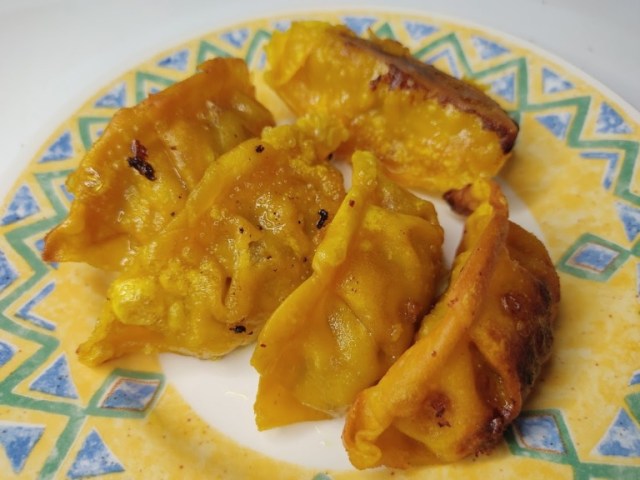
After a 2.5-minute round in the deep-fryer, the gyoza didn’t look much different to their pan-fried counterparts. Once they passed Miho’s lips, though, the difference became as clear as night and day. These were hardly fit to be called gyoza… They were more like delicious, crispy, delectable samosas!
The flavor became somehow more concentrated and vivid through the deep-frying process, and ironically, the rich curry flavor granted it more of an Indian vibe than a Japanese one. Still, the gyoza-samosas were so delicious that Miho had to chalk them up as a success! While interpretations of Japanese cuisine from other countries often fall short when it comes to replicating an authentic flavor, combining cuisines can bring about something new and exciting…and delicious, too!
Images © SoraNews24
● Want to hear about SoraNews24’s latest articles as soon as they’re published? Follow us on Facebook and Twitter!
Credit:

0 comments:
Post a Comment